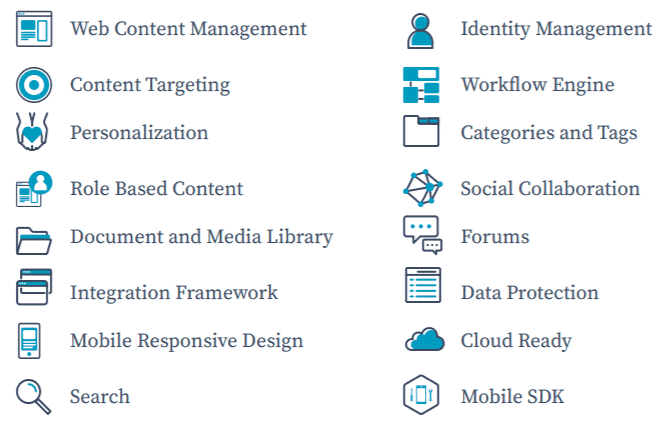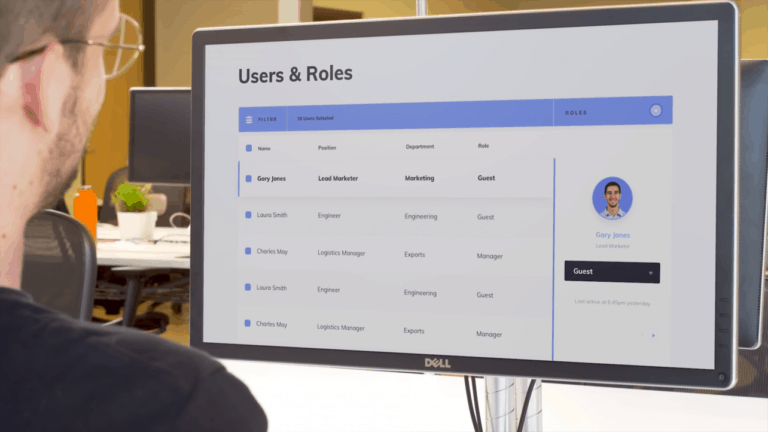Liferay is in full development with its Digital Experience Platform (DXP) technology. The platform continues to add functionalities to enable companies to deliver a personalized experience to their customers. This approach ensures that the business also goes well, which makes Liferay an increasingly important player in the DXP market.
We don’t often write about Digital Experience Platforms here at Techzine, but that doesn’t make the software any less interesting. Companies with such a platform have a number of technologies in their hands to achieve good experiences for the web and all connected devices (smartphones, but also smart speakers, for example). This often involves promoting the experience of customers, but employees can also be addressed with a DXP.
DXP is, therefore, often an architecture with several products, in which everything works very closely together. The functionalities deal with the composition, management and optimization of activities related to the experiences of customers and employees.
Market intensifies activities
The importance of DXP is quite great when you consider that companies are increasingly focusing on the experience of the customer. If there is insufficient focus on the customer experience, they are in danger of being overtaken by the competition. After all, giving priority to customer experience has already caused a stir in various sectors. Sectors such as the taxi industry have been transformed by journeys apps, but traditional companies that offer a personalized experience have also made a strong leap into the market.
Several IT suppliers are, therefore, aware that the customer experience is becoming increasingly important. They are expanding their activities in this area. For DXP, this means that the Gartner Magic Quadrant is filled with 17 vendors, which is quite substantial. Established names such as IBM and Salesforce are included, but Liferay is also mentioned. Other major SaaS players, including Adobe and SAP, have even made supporting the overall corporate experience one of the most important pillars for the coming period. For example, SAP bought Qualtrics for 8 billion dollars to speed up this process.
With so many software suppliers active in the market for experience optimisation in one way or another, Liferay needs to get off to a good start. In addition, it can already give itself a pat on the back by being labelled as a ‘leader’ in the Magic Quadrant, but it is not the case for Liferay. The pace of innovation must remain high in order to remain a relevant player. According to Liferay DXP, this is the case when it comes to providing personalized services.
Big focus on bringing content to the customer
To put it simply, if we look purely at how that idea turns out in practice, it means that Liferay DXP provides companies with a platform to build portals or websites as easily as possible, for example. The platform offers functionalities to support developers, but also to serve other users.
Liferay DXP, for example, can be used as a headless CMS. There are no front-end components in such a CMS, which makes the software ‘headless’. When content is added to the CMS, it can be released at any endpoint. This by claiming an Application Programming Interface (API).
With headless, tailor-made experiences must be created for each endpoint. This can be a web page, but also a smartwatch or chatbot. By disconnecting the front-end from the back-end, as it were, it should also be easier to tinker with certain possibilities. This could include integration with third-party software, so that the content may also be compatible with future endpoints. Like that, developers can build in all kinds of functionalities.
At the same time, Liferay wants to make publishing content with its platform as simple as possible, so that everyone can use it. It has created point-and-click interfaces, but also a WYSIWYG (What You See Is What You Get) editor, for example.

Around the CMS and Web Content Management (WCM) activities, Liferay has a lot of other things built-in, as you can see above. Within Liferay DXP, for example, there is a lot of attention for automating workflows. For this, there is an interface available in which you can automate workflows by means of ‘maps’ and arrows. Such a map represents a task or action within the process. When automating workflows, the ultimate goal is to minimize the amount of code that is written.
Another component that Liferay pays a lot of attention to is providing a platform that is as secure as possible. The product is offered through a commercial subscription and open source, which expresses the confidence in security that it is safe software. This allows users with a security background to carry out security audits. It is also the policy that if a vulnerability is found, the intention is to solve the vulnerability within 72 hours.
What will Liferay do to achieve more simplicity?
In that respect, there is not much doubt about how the Liferay DXP product looks like. It is more a question of what the company does to remain relevant in the full SaaS market. The answer may be found in the additional commerce module, A/B testing and expansion of headless CMS capabilities. A number of APIs have recently been added to this, in order to intensify the hybrid approach. The so-called content delivery APIs provide access to structured content and document management, among other things. The content management APIs, in turn, allow developers to add, edit and delete content. There are also the content participation APIs for involving users in content by having them respond with likes, ratings and more.
Another step that the software supplier recently took is more extensive support for the classification of target groups. Users of the platform can write rules for the composition of the relevant target groups or use machine learning to determine target groups automatically. This makes it possible to create several variants of a single page, so that the page fits the target group.
Attention to artificial intelligence
Liferay DXP can run on an on-premise server, but can also be delivered from the cloud. The latter ensures that Liferay looks at what the cloud and cloud services can offer in terms of extras. This has recently led to the use of AI-driven cloud services for auto-tagging of content. The system thus recognizes what is entered into the system, e.g. an invoice from a particular supplier, to link tags to it as an ‘invoice’ and the name of the supplier. This makes it easier to find the content.
Liferay therefore regularly looks at adding AI and machine learning capabilities. This is because it can take an automation step that is more than welcome for DXP software. After all, for users, this results in greater simplicity and time savings, while the chance of errors is reduced.
Interesting product in a competitive market
This means that Liferay DXP is sufficiently in development as a product. There is an eye for trends in the market, such as a focus on further automation. Workflow automation, for example, is a component from which companies can benefit a great deal, while intensifying AI capacities also provides interesting scenarios for users.
By delivering personalized services to customers and employees, Liferay is in a field where large IT suppliers are also active. That’s nice to see, but at the same time, the large SaaS suppliers have more money to expand the possibilities. Therefore, we are curious to see how Liferay continues to develop, so that it remains a serious option for companies looking for DXP software.
